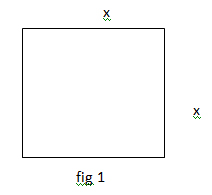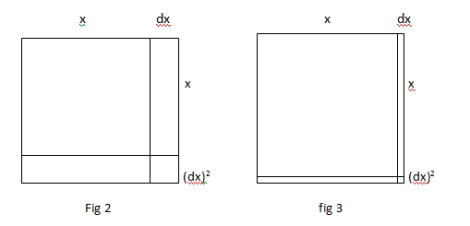March 8, 2011
ORDER OF SMALLNESS
In the process of calculation we have to deal with very small quantities of various degrees of smallness. Let us take some examples:
There are 60mins in an hour,24hrs in a day,7 days in a week. Therefore there are 1440 mins in a day and 10080 mins in a week.
Obviously 1 min is very small compared with a week. It is considered as small as compared with an hour, and its called “minutes”, meaning minute fraction (one sixtieth of an hour). When they came to require still smaller subdivisions of time, minutes are divided into 60 still smaller parts called as “second minutes”(i.e. small quantities of second order of minuteness”). These small quantities of second order of smallness are called “seconds”.
Now we will get into the higher degrees of smallness. In the case of time 1/60 be called a small fraction, then 1/60 of 1/60 (being a small fraction of a small fraction) may be considered as a small quantity of second order of smallness and 1/60 of 1/3600 would be a small fraction of third order of smallness. If we were to take 1/60 of 1/(60*3600) becomes very small and called as forth order of smallness. So by going in to higher degrees the value becomes very small and it can be discarded.
Hence we can neglect the small quantities of second or third (or higher) orders, if only we take the small quantity of the first order small enough.
Now in the calculus we write dx for a little bit of x. these little bits such as dx,du and dy are called “differentials”,i.e.the defferential of x, or of u,or of y. if dx be the small bit of x,but it does not mean that the quantities x.dx or x.x.dx are neglected. But dx x dx would be neglected,being a small quantity of second order.
Let us take an example :
Suppose x as a quantity that can grow by smaller amount dx i.e. x+dx,where dx is the small increment added to x.
(x+dx)2 = x2 + 2x.dx + (dx)2
The second term is not neglected because it is first order quantity ; but the third term can be neglected because it is the second order of smallness.
Taking it geometrically :
in the above square,the side represents x. Now suppose the square is growning by an amount of dx. Then it becomes:
In fig 2 the two rectangles are added to the original square x2. One rectangle area of x.dx and other rectangle area of x.dx. thus forms 2xdx. And the small square (dx)2. In fig 2 we have taken dx as big fraction of x. suppose we are taking dx as a small fraction of x as in fig 3. You can see the square (dx)2 as very small. So it is clear that (dx)2 becomes negligible only if we consider the increment dx as small quantity.
March 7, 2011
MEANING OF THE SYMBOLS d AND ∫
To learn how to calculate, we have to look into the meaning of two principal symbols that are used in calculus. Symbols are :
1) “d” which merely means “a little bit of”. Thus dx means a little bit of x ; or du means a little bit of ‘u’. it can also be called as “an element of x”; or “element of u”. thus little bits(elements) are considered to be indefinitely small.
2) ∫ nothing but a long S or “the sum of”. Thus ∫dx means the sum of all little bits of x; ∫du means the sum of all little bits of u. it can also be called as “integral of x”. if x is considered to be made of lot of little bits,each of which is called dx,if you add them all together you get the sum of all dx’s(which is same thing as the whole of x). so the word “integral” means “the whole”.
March 6, 2011
About Calculus
Calculus is a branch of mathematics which deals with limits, functions, derivatives, integrals, and infinite series. This subject constitutes a major part of modern mathematics education. It has two branches
1)differential calculus
2)integral calculus,
which are related by the fundamental theorem of calculus. Calculus is the study of change,in the same way that geometry is the study of shape and algebra is the study of operations and their application to solving equations. Calculus has vast applications in science, economics, and engineering and it can also solve many problems for which algebra alone is insufficient.

